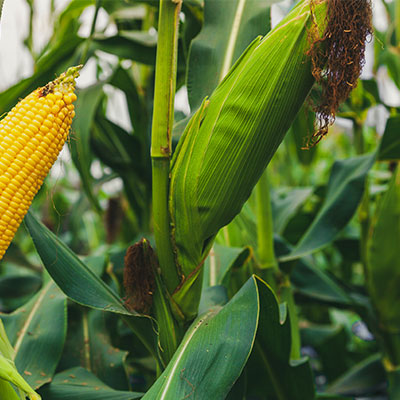Porto Alegre, September 6, 2021 – If the production losses of the 2021 second crop are a consensus, the Brazilian supply until the 2022 second crop seems to bring some optimism and tranquility on the part of the market. Some agents still look at delayed figures on Brazilian exports and are frightened by some imports coming from Argentina. This equation between what is to be exported and imported is the sign for the carryover stocks in 2022. However, there is seasonality.
Despite the second crop losses, there are 55/56 million tons still at harvest and that cannot be fully absorbed by the entire market in the short term. Growers, who have slowed down sales for the last sixty days, are back to the market but find some consumers holding short-term stocks and with no appetite for new big lots at the moment. This sales pressure, albeit isolated, helped the market to aggressively drop prices in early September.
Over the past sixty days, Brazilian domestic sales were limited to the compliance of contracts by growers, the harvest in Mato Grosso, and sales by trading companies in the domestic market. There had not yet been a normal harvest cycle and sales pressure by growers in cooperatives, cereal companies, and consumers in general. The turn of the month from August to September has a seasonality that is the maturity of second crop debts, which tends to extend until the end of September. Also, many growers, later, start to close purchases of fertilizers and chemicals for the summer crop, in most cases of soybeans, with payment in corn. Therefore, this is a movement of sales and commitments that occurs every year, but in 2021 this has been accentuated by what happened in July and August with very high internal prices.
This movement will come to a standstill sometime until October. From then on, the points of relevance will be:
– Position of the private sector stocks to support supply until the summer crop starts, at least;
– Flow of exports to reduce the regional supply and create better or worse availability for the domestic market;
– Flow of imports in Argentina and Paraguay to balance supply in the South region;
– Planting and development of the regional summer crop;
– Dollar and price profile to facilitate or not this import channel on the part of Brazil.
Corn imports from Argentina have improved for September. In August, they hit 160 thousand tons. In September, the schedule is at 230 thousand tons, basically for Brazil’s South region. Cumulatively, there may be 544 thousand tons purchased in Argentina. In addition, there are volumes from Paraguay that will only be available this week. But the pace of Paraguay should be normal, with 200 to 300 thousand tons for September. Therefore, imports are taking place, and the federal government has not yet decided on the withdrawal of PIS/Cofins from corn imports.
Exports are surprising given the domestic scenario of very high prices and difficulties in producing a quality product for exports, at least in some states. The fact is that Santos and the northern ports have made too many shipments. Secex ended August with 4.35 million tons, with an effective shipment of 4.25 million. September now has 2.45 million tons already scheduled for exports, and this volume could reach 5 million by the end of the month. In the accumulated result for the year, we are going to 10.5 million tons shipped or already scheduled for shipment. In two months, Brazil reached 50% of the year’s target, that is, 20 million tons.
Two factors can boost exports. The first, given the decline in internal prices, is that trading companies can reduce the definitions of ‘washout’ and comply with shipments scheduled for October to January, reducing the pressure on internal sales. The second is that the damage caused by the hurricane at the Gulf of Mexico may require that some trading companies halt washouts in Brazil to fulfill shipments that would be of US corn in September/October.
In fact, some consumers in southern Brazil are well-positioned with lots already purchased, with imports from Argentina and Paraguay, and expect that the summer crop of Rio Grande do Sul in January meets the early 2022 demand. Therefore, it would not be unusual if sales by trading companies decreased in the domestic market, and greater volumes were bound for exports, not in new business, but just with the stoppage of washouts.
The rain that reached Rio Grande do Sul and Santa Catarina at the beginning of September helped to speed up the planting of the regional summer crop. There is a detail that accelerates this early corn planting, that is, the agricultural zoning of soybeans will allow soybean planting only until January 31. Therefore, corn will need to be reaped in Missões before this date to enable soybean planting.
Agência SAFRAS Latam
Copyright 2021 – Grupo CMA

